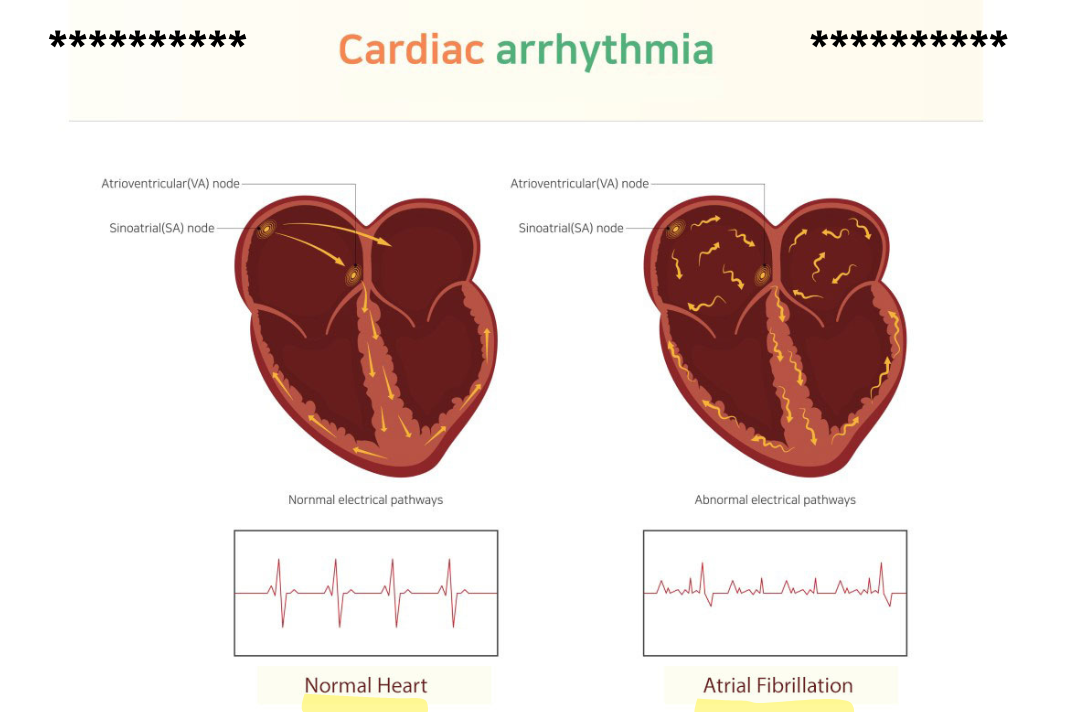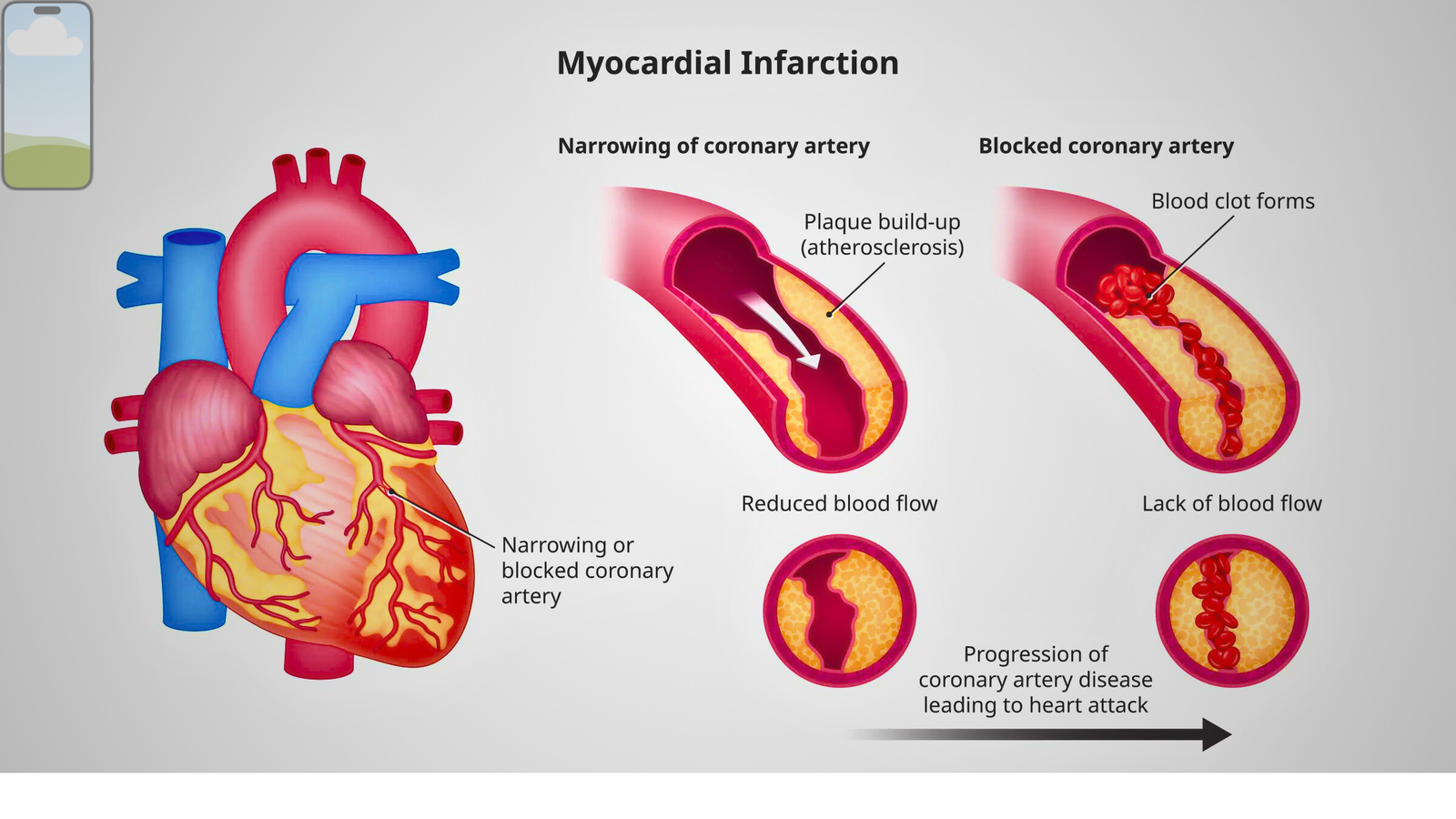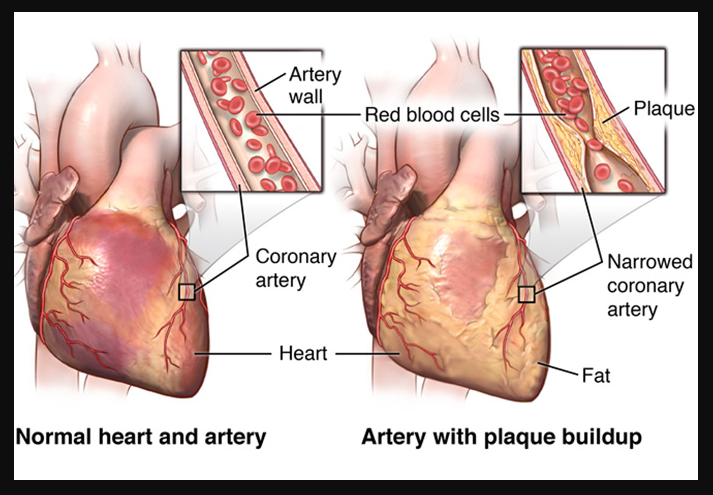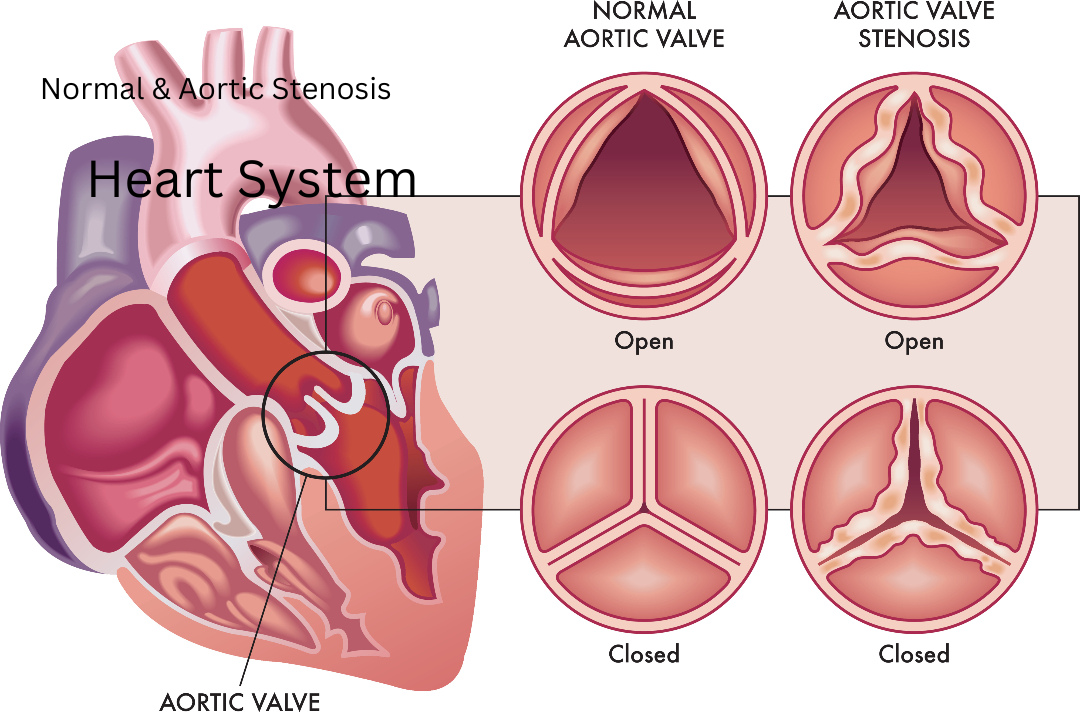Mitral Valve Prolapse, like a gentle hiccup in the heart’s performance, occurs when the mitral valve doesn’t close smoothly. Imagine the heart as a house with rooms, and the mitral valve as a door separating two chambers. When someone has Mitral Valve Prolapse, it’s like that door doesn’t close as quietly as it should, causing a little click or murmur. The mitral valve is a bit like a gatekeeper, regulating the flow of blood between the heart’s chambers. However, with Mitral Valve Prolapse, this gatekeeper isn’t as smooth, leading to a distinct sound when the valve closes. While Mitral Valve Prolapse might sound like a curious quirk, it’s usually harmless and doesn’t affect the heart’s overall function. It’s like a door that closes with a soft click instead of a silent swoosh. Doctors might detect this condition during a routine check-up, listening to the heart’s unique melody. Understanding Mitral Valve Prolapse is like appreciating the heart’s intricate architecture, where even a gentle hiccup doesn’t stop the symphony of life.
Mitral Valve Prolapse Causes
Mitral Valve Prolapse, a gentle hiccup in the heart’s performance, can be a bit mysterious. Let’s unravel the reasons why this door in the heart doesn’t close as smoothly as it should, in a way that’s easy for a sixth-grader to understand.
- Genetic Twist – Passing Down the Quirk: Sometimes, Mitral Valve Prolapse is like a family trait, passed down from parents to their children. It’s a genetic twist in the heart’s architecture that can make the mitral valve a bit different.
- Connective Tissue Disorders – The Heart’s Building Blocks: Imagine the heart’s structure like a carefully built house. Connective tissue disorders, which affect the heart’s building blocks, can be like using different materials for the mitral valve, making it behave in its own unique way.
- Age Factor – A Door that Ages Differently: As we grow older, the mitral valve might age differently. It’s like a door in the heart that doesn’t close as smoothly with time, leading to Mitral Valve Prolapse.
- Gender Play – A Quirk More Common in Women: Mitral Valve Prolapse is often more common in women. It’s like the heart’s way of expressing itself a bit differently based on gender, creating a unique sound when the valve closes.
- Other Heart Conditions – A Domino Effect: Sometimes, other heart conditions can set the stage for Mitral Valve Prolapse. It’s like a domino effect, where one condition influences the behavior of the mitral valve.
- Physical Stress – The Heart’s Heavy Lifting: Physical stress, like intense exercise or heavy lifting, can be like the heart doing some heavy lifting of its own. This stress can affect the mitral valve, causing it to behave differently.
- Fever and Infections – A Temporary Quirk: Imagine the heart catching a temporary cold. Fever and infections can be like a glitch in the heart’s system, influencing the mitral valve temporarily.
Symptoms of Mitral Valve Prolapse
Mitral Valve Prolapse, like a unique note in the heart’s melody, can sometimes come with subtle signals.
- Heart Palpitations – Feeling the Heart’s Flutter: Experiencing heart palpitations is like feeling the heart fluttering. It’s a sensation that the heart is dancing to its own rhythm, creating a noticeable beat.
- Fatigue – The Tired Heart: Feeling more tired than usual is like the heart signaling that it might need a bit more rest. It’s a symptom that can be compared to the body’s way of saying, “Take it easy.”
- Chest Discomfort – A Gentle Unease: Chest discomfort with Mitral Valve Prolapse is like a gentle unease in the heart’s region. It’s not a sharp pain but more of a subtle feeling that something is different.
- Shortness of Breath – The Breathless Dance: Imagine dancing and suddenly feeling breathless. Shortness of breath with Mitral Valve Prolapse is like the heart’s way of saying, “I need a little more air,” especially during activities.
- Dizziness or Lightheadedness – The Dance’s Unsteady Steps: Feeling dizzy or lightheaded is like taking unsteady steps on the heart’s dance floor. It’s a signal that the heart’s rhythm might be causing a bit of imbalance.
- Anxiety – The Nervous Melody: Anxiety with Mitral Valve Prolapse is like the heart playing a nervous melody. It’s not always linked to external factors but can be a symptom on its own.
- Migraines – The Headache Harmony: Some people with Mitral Valve Prolapse might experience migraines. It’s like the heart and the head creating their unique harmony, influencing each other.
- Irregular Heartbeat – The Unpredictable Dance: Feeling an irregular heartbeat is like sensing the heart’s unpredictable dance moves. It’s not always a consistent rhythm, and this irregularity can be a symptom of Mitral Valve Prolapse.
Recognizing these signals is like having a secret code from the heart. If someone ever experiences these symptoms, it’s important to consult the doctor. The heart, much like a musical instrument, communicates through its unique language, and understanding these signals helps us take better care of ourselves.
Mitral Valve Prolapse Treatment
When the heart decides to play a unique note, like in Mitral Valve Prolapse, gentle care and attention can often bring it back into tune. Let’s explore the ways doctors may help the heart find its rhythm without diving into the complexities.
- Regular Check-ups – Listening to the Heart’s Melody: Going for regular check-ups is like having a musical coach listen to the heart’s melody. Doctors can monitor the heart’s unique notes and ensure it stays in harmony.
- Lifestyle Adjustments – Shaping the Heart’s Dance: Making small changes in lifestyle is like adjusting the dance routine. Staying active, eating healthy foods, and getting enough rest can shape the heart’s dance in a healthier direction.
- Medications – Guiding the Heart’s Beat: Sometimes, doctors might prescribe medications to guide the heart’s beat. It’s like giving the heart a helpful hand to follow a more regular rhythm, much like a dance instructor guiding the steps.
- Managing Stress – Creating a Calm Dance Floor: Stress management is like creating a calm dance floor for the heart. Techniques like deep breathing and relaxation exercises can help the heart find its balance.
- Monitoring Heart Health – Keeping an Eye on the Dance: Regularly monitoring heart health is like keeping an eye on the dance floor. Doctors may recommend tests to ensure the heart’s rhythm stays in tune and make adjustments if needed.
- Education and Understanding – Learning the Heart’s Language: Understanding Mitral Valve Prolapse is like learning the heart’s language. Doctors and educators can provide information so that individuals with this condition know how to care for their hearts.
- Support and Encouragement – A Heartfelt Cheer: Having support from family and friends is like a heartfelt cheer for the heart. Emotional well-being is crucial, and a positive environment can contribute to the heart’s overall health.
- Specialized Interventions – Fine-Tuning the Dance Routine: In some cases, doctors might suggest specialized interventions to fine-tune the heart’s dance routine. It’s like making precise adjustments to ensure the heart functions at its best.












I enjoyed it just as much as you will be able to accomplish here. You should be apprehensive about providing the following, but the sketch is lovely and the writing is stylish; yet, you should definitely return back as you will be doing this walk so frequently.
The amount of affection that I had for you is indescribable. It does not matter how beautiful something is or how beautifully you have written it if you are only reading it quickly. It is my firm belief that you ought to give it another shot very soon. I am grateful that you have made certain that this hike is risk-free. I shall make an effort to go on it on multiple occasions.
Fantastic site A lot of helpful info here Im sending it to some buddies ans additionally sharing in delicious And naturally thanks on your sweat
I am not sure where youre getting your info but good topic I needs to spend some time learning much more or understanding more Thanks for magnificent info I was looking for this information for my mission
Magnificent beat I would like to apprentice while you amend your site how can i subscribe for a blog web site The account helped me a acceptable deal I had been a little bit acquainted of this your broadcast offered bright clear idea
What i do not understood is in truth how you are not actually a lot more smartlyliked than you may be now You are very intelligent You realize therefore significantly in the case of this topic produced me individually imagine it from numerous numerous angles Its like men and women dont seem to be fascinated until it is one thing to do with Woman gaga Your own stuffs nice All the time care for it up
Its like you read my mind You appear to know a lot about this like you wrote the book in it or something I think that you could do with some pics to drive the message home a little bit but instead of that this is fantastic blog An excellent read I will certainly be back
Nice blog here Also your site loads up very fast What host are you using Can I get your affiliate link to your host I wish my site loaded up as quickly as yours lol
Just wish to say your article is as surprising The clearness in your post is just cool and i could assume youre an expert on this subject Fine with your permission allow me to grab your RSS feed to keep updated with forthcoming post Thanks a million and please keep up the enjoyable work
helloI really like your writing so a lot share we keep up a correspondence extra approximately your post on AOL I need an expert in this house to unravel my problem May be that is you Taking a look ahead to see you
I do not even know how I ended up here but I thought this post was great I dont know who you are but definitely youre going to a famous blogger if you arent already Cheers
Thank you for the auspicious writeup It in fact was a amusement account it Look advanced to more added agreeable from you By the way how could we communicate
Hi my loved one I wish to say that this post is amazing nice written and include approximately all vital infos Id like to peer more posts like this
you are in reality a good webmaster The website loading velocity is amazing It sort of feels that youre doing any distinctive trick Also The contents are masterwork you have done a fantastic job in this topic
Simply desire to say your article is as surprising The clearness in your post is simply excellent and i could assume you are an expert on this subject Fine with your permission let me to grab your feed to keep up to date with forthcoming post Thanks a million and please carry on the gratifying work
of course like your website but you have to check the spelling on several of your posts A number of them are rife with spelling issues and I in finding it very troublesome to inform the reality on the other hand I will certainly come back again
I luckily stumbled upon this fantastic website earlier this week, they build marvelous content for members. The site owner clearly knows how to captivate visitors. I’m impressed and hope they keep up the excellent material.
Nice blog here Also your site loads up fast What host are you using Can I get your affiliate link to your host I wish my web site loaded up as quickly as yours lol
Its like you read my mind You appear to know so much about this like you wrote the book in it or something I think that you can do with a few pics to drive the message home a little bit but other than that this is fantastic blog A great read Ill certainly be back
Your point of view caught my eye and was very interesting. Thanks. I have a question for you.
Usually I do not read article on blogs however I would like to say that this writeup very compelled me to take a look at and do so Your writing taste has been amazed me Thanks quite nice post
Thank you for your sharing. I am worried that I lack creative ideas. It is your article that makes me full of hope. Thank you. But, I have a question, can you help me?
I loved as much as youll receive carried out right here The sketch is tasteful your authored material stylish nonetheless you command get bought an nervousness over that you wish be delivering the following unwell unquestionably come more formerly again since exactly the same nearly a lot often inside case you shield this hike
Normally I do not read article on blogs however I would like to say that this writeup very forced me to try and do so Your writing style has been amazed me Thanks quite great post
Nice blog here Also your site loads up very fast What host are you using Can I get your affiliate link to your host I wish my site loaded up as quickly as yours lol
Great goods from you, man. I’ve understand your stuff
previous to and you’re just too fantastic. I really like what you’ve acquired here, certainly like what you are saying
and the way in which you say it. You make it enjoyable and
you still take care of to keep it sensible.
I can’t wait to read far more from you. This is
really a terrific site.
Its like you read my mind You appear to know so much about this like you wrote the book in it or something I think that you can do with a few pics to drive the message home a little bit but other than that this is fantastic blog A great read Ill certainly be back
I was suggested this web site by my cousin Im not sure whether this post is written by him as no one else know such detailed about my trouble You are incredible Thanks
Fantastic beat I would like to apprentice while you amend your web site how could i subscribe for a blog site The account helped me a acceptable deal I had been a little bit acquainted of this your broadcast offered bright clear concept
I simply could not go away your web site prior to suggesting that I really enjoyed the standard info a person supply on your guests Is going to be back incessantly to investigate crosscheck new posts
I have been browsing online more than three hours today yet I never found any interesting article like yours It is pretty worth enough for me In my view if all website owners and bloggers made good content as you did the internet will be a lot more useful than ever before
Hi my family member I want to say that this post is awesome nice written and come with approximately all significant infos I would like to peer extra posts like this
Nice blog here Also your site loads up very fast What host are you using Can I get your affiliate link to your host I wish my site loaded up as quickly as yours lol